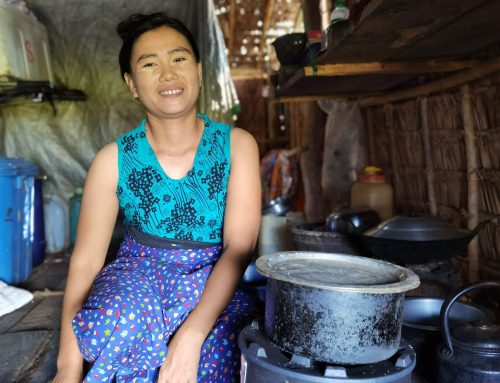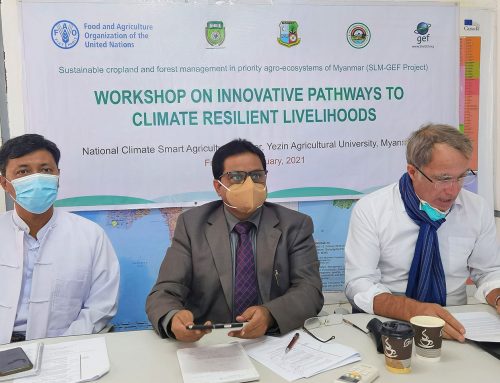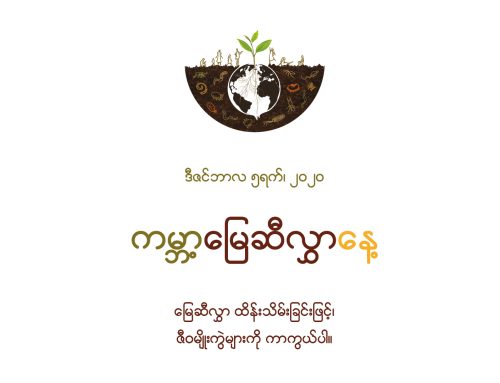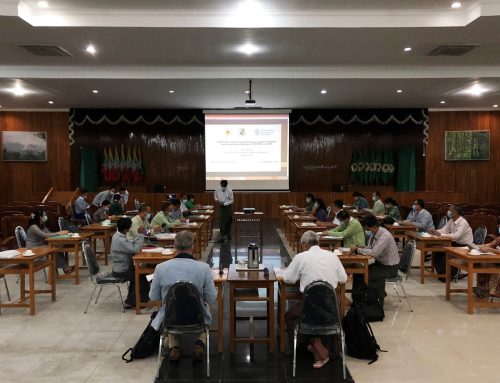Approximately three-quarters of Myanmar’s population dwells in rural area and relies on forest resources for daily socio-economic subsistence. Rural communities in the Ayeyarwady Delta region on Myanmar’s southwestern coast are no exception.
The Ayeyarwady Delta region has a high concentration of mangrove trees and shrubs growing at the intersection of land and sea. These mangroves are important for many reasons. For example, mangroves exist among the most productive terrestrial ecosystems and are a natural, renewable resource. The mangroves provide feeding, breeding and nursing grounds for numerous fish, and the majority of the community earns a living from fishing in the region.
Over the past few decades, however, over 60% of mangroves in the Delta have been destroyed. The main reason is converting land to use for planting rice or for human settlements.
 Consequently, destroying and clearing mangroves will likely negatively impact fisheries in the region, thus leading to a loss of livelihoods. “We (the villagers) cannot catch fish and crabs as easily as in the past due to rapid disappearance mangrove forests in our area,” noted U Kyaw Soe, the Chairman of Community Forest User Group from Mya Yar Gone Village.
Consequently, destroying and clearing mangroves will likely negatively impact fisheries in the region, thus leading to a loss of livelihoods. “We (the villagers) cannot catch fish and crabs as easily as in the past due to rapid disappearance mangrove forests in our area,” noted U Kyaw Soe, the Chairman of Community Forest User Group from Mya Yar Gone Village.
Also, the environmental stability the mangroves provide will diminish, increasing local communities’ exposure to climate and natural disasters.
The rapid yearly loss of mangrove forests has drawn attention to conserving and restoring them via forest restoration projects and policies. The sustainable cropland and forest management in Myanmar’s priority agroecosystems, a five-year project funded by the Global Environment Facility, promotes sustainable forest management by establishing community forest user groups. In collaboration with the Forest Department, six Community Forest User Groups (CFUG) have been established to facilitate the reforestation of mangroves. The SLM project provided cash grants to the six CFUGs to compensate for lost income due to efforts to prevent the spread of COVID-19 in communities. With the grants, six CFUGs have established mangrove nurseries.
“We would like to thank Forest Department for showing us how to build this nursery and the SLM project for providing cash support. This field can be reused to produce mangrove plants in coming years. Besides, this collective effort will help restore mangrove forests that have been lost over the past decades due to overcutting for both subsistence and commercial uses,” remarked U Kyaw Soe.
For adapting to the rapidly evolving situation triggered by the COVID-19 pandemic, the cash assistance to local communities was indeed timely. “We responded to emerging needs, such as the loss of income, and simultaneously worked with communities to understand how to establish mangrove nurseries,” noted Xavier Bouan, the Senior Technical Adviser of the Sustainable Land Management Project.
This key milestone contributes to restoring lost and degraded mangrove ecosystems—a fundamental step to reducing the impact of climate change and to restoring a major long-term source of forest and fishery products and ecosystem services. The successfully grown mangrove plantlets will be transplanted in a community forest area approved by the Forest Department this year and for years to come.





